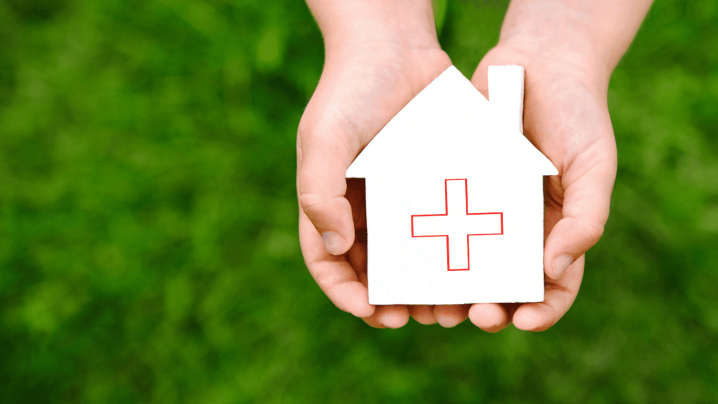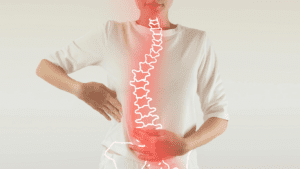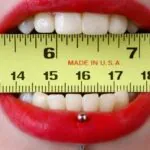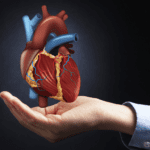Our health is the most valuable asset of our lives. Regular health check-ups are very important for early detection and prevention of potential health problems. However, we may not always be able to go to the doctor or we may want to do some simple checks ourselves at home. In this article, we will take a closer look at 5 simple health tests that you can easily perform at home. These tests can help you get an idea of your general health, but remember that they are not a substitute for professional medical diagnosis and treatment. If you have any health concerns, you should always consult a health professional.
1. Body Mass Index (BMI) Test
Body Mass Index (BMI) is a simple calculation that estimates your body fat percentage based on your height and weight ratio. This test gives you a quick idea of your general health and helps you identify possible weight problems.
How is it done?
- Measure your height in meters (for example, 1.75 m).
- Measure your weight in kilograms (for example, 70 kg).
- Apply the BMI formula: BMI = Weight / (Height x Height)
- Example: 70 / (1.75 x 1.75) = 22.86
Evaluating Results
- Below 18.5: Weak
- 18.5 to 24.9: Normal weight
- 25 to 29.9: Overweight
- 30 and above: Obese
Things to Consider
The BMI test does not accurately measure body fat percentage and does not take into account factors such as muscle mass and bone density. Therefore, it can give misleading results, especially for athletes or people with high muscle mass. In addition, factors such as age and gender can also influence the results.
2. Pulse Measurement
A pulse measurement allows you to determine how many times your heart beats in one minute. This simple test can give you important information about your cardiovascular health.
How is it done?
- Find the artery on the inside of your wrist, under your thumb.
- Feel your pulse by pressing lightly with your index and middle finger.
- Count your heartbeat for 60 seconds using a watch or timer.
- The number of beats you count is your pulse rate per minute.
Evaluating Results
The normal resting pulse rate for adults is usually between 60-100 beats per minute. However, this number may be lower in people in good physical condition.
- Below 60: Low pulse (bradycardia)
- 60 to 100: Normal pulse
- Over 100: High pulse (tachycardia)
Things to Consider
Make sure you are calm and relaxed when taking your pulse. Exercise, stress, caffeine consumption or certain medications can affect your pulse rate. If you regularly measure abnormal pulse rates, it is important to consult a doctor.
3. Waist-Hip Ratio Test
The waist-to-hip ratio test is a simple measurement that helps you assess the distribution of fat in your body. This test can provide insight into metabolic health risks and is particularly used to assess abdominal fat.
How is it done?
- Measure your waist circumference:
- Measure just above your belly button, while breathing normally.
- Measure your hip circumference:
- Measure at the widest part of your buttocks.
- Divide your waist size by your hip size.
Example: The waist-to-hip ratio of a person with a waist circumference of 80 cm and a hip circumference of 100 cm: 80 / 100 = 0.8
Evaluating Results
For women
- 0.8 and below: Normal
- Above 0.8: High risk
For men
- 0.9 and below: Normal
- Above 0.9: High risk
Things to Consider
While this test gives a general idea, it alone does not give a complete picture of your health status. Age, general body composition and other health factors should also be taken into account. A high rate can be a risk factor for type 2 diabetes, heart disease and other metabolic problems.
4. Flexibility Test
Flexibility is an important indicator of your overall physical health. Good flexibility allows you to perform your daily activities more easily, reduces your risk of injury and improves your overall quality of life.
How is it done?
For this test, we will use the method known as the "Sit-Sit Test":
- Sit on the floor and stretch your legs straight out in front of you.
- Lift the soles of your feet straight up.
- Stretch your arms straight out in front of you.
- Slowly lean forward and try to touch your toes with your fingers.
- Wait 2-3 seconds at the last point you can reach.
- Measure the distance from your toes to the tips of your feet.
Evaluating Results
Results may vary by age and gender, but a general assessment is as follows:
- Reaching beyond the toes: Excellent flexibility
- Reaching the toes: Good flexibility
- Reaching the ankles: Medium flexibility
- Reaching the middle of the legs: Low flexibility
- Inability to reach the knees Very low flexibility
Things to Consider
Do not strain yourself while doing the test. Stop immediately if you feel pain. You can improve your flexibility over time by doing regular stretching exercises. If you have serious flexibility problems, it may be helpful to consult a physiotherapist.
5. Balance Test
Good balance plays an important role in everyday life and reduces the risk of falls. This simple test can help you assess your balance.
How is it done?
- Stand on a flat surface with your feet side by side.
- Put your hands on your hips.
- Lift one foot off the floor and rest it on the knee of the other leg.
- Keeping your eyes open, measure how long you can stay in this position.
- Repeat the test for both feet.
Evaluating Results
The expected duration of equilibrium by age is as follows:
- 20-49 years old: 24-28 seconds
- 50-59 years old: 21 seconds
- 60-69 years old: 10 seconds
- 70-79 years old: 4 seconds
- 80 years and older: 3 seconds
Things to Consider
Take the test in a safe environment and be alert to the risk of falling. End the test as soon as you feel that you have lost your balance. You can improve your balance by doing regular balance exercises.
Conclusion
These five simple health tests can help you get an idea of your overall health. But remember that these tests are not a substitute for a professional medical assessment. If you have any health concerns or if your test results are out of the norm, you should always consult a health professional.
Performing these tests regularly can help you keep track of changes in your health and recognize conditions that require early intervention. You will also have the opportunity to get to know your body better while doing these tests.
In addition to these tests, it is also important to adopt basic health habits such as a balanced diet, regular exercise, adequate sleep and avoiding stress. Take care of yourself and always put your health first.
Additional Recommendations
- Perform these tests at regular intervals (e.g. once a month) and record your results. This will help you to observe changes over time.
- Try to ensure the same conditions when doing the tests (e.g. same time of day, similar level of physical activity).
- When interpreting your results, consider individual factors such as age, gender, general health.
- In addition to these tests, it can also be useful to regularly measure your blood pressure and blood sugar. There are sphygmomanometers and glucometers that you can use at home.
- If you have any chronic diseases or take regular medication, it is important to consult your doctor before performing these tests.
- In addition to health tests, it is also important to regularly check your skin. Observe moles and spots on your body and consult a dermatologist if you notice any changes.
- Do not neglect your oral and dental health. In addition to regular brushing and flossing, do not forget to visit the dentist at least twice a year.
In conclusion, these home tests can help you get a general idea of your health, but they cannot replace regular doctor check-ups for a comprehensive health assessment. Take your health seriously and do not hesitate to seek professional help in case of any doubt. A healthy life is possible with regular check-ups and good habits.s























